Physical Address
304 North Cardinal St.
Dorchester Center, MA 02124
The term hemangioendothelioma is the designation for vascular tumors that have a biologic behavior intermediate between a hemangioma and a conventional angiosarcoma. Tumors included in this group have the ability to recur locally and some ability to metastasize, but at a reduced level compared to angiosarcoma. The risk of metastases varies within this group from tumor to tumor. For example, epithelioid hemangioendothelioma, the most aggressive member of this family, produces distant metastasis and death in up to 20% of patients, whereas retiform and Dabska-type hemangioendotheliomas, two closely related tumors, have been associated with regional lymph node metastasis only.
Epithelioid hemangioendothelioma, an angiocentric vascular tumor, can occur at almost any age but rarely occurs during childhood. It affects the sexes about equally. To date, no predisposing factors have been identified. The tumor develops as a solitary, slightly painful mass in either superficial or deep soft tissue, although in rare instances it occurs multifocally in a localized region of the body ( Fig. 21.1 ). At least half of cases are closely associated with or arise from a vessel, usually a vein ( Fig. 21.2 ). In some cases, occlusion of the vessel accounts for more profound symptoms, such as edema or thrombophlebitis. Tumors that arise from vessels usually have a variegated, white-red color and superficially resemble organizing thrombi, except they are firmly attached to the surrounding soft tissue. Those that do not arise from vessels are white-gray and offer little hint of their vascular nature on gross inspection. Calcification is occasionally seen in large deeply situated tumors (see Fig. 21.1 ).
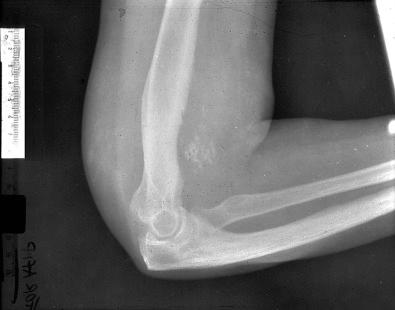
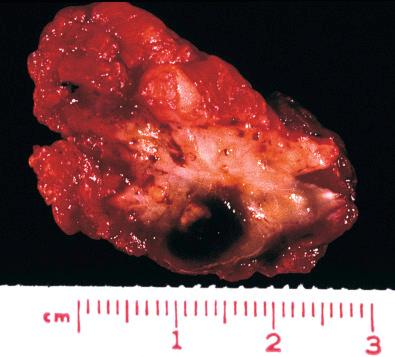
Lesions that arise from vessels have a characteristic appearance when seen at low power. They expand the vessel, usually preserving its architecture as they extend centrifugally from the lumen to the soft tissue ( Figs. 21.3 and 21.4 ). The lumen is filled with a combination of tumor, necrotic debris, and dense collagen. Unlike epithelioid hemangioma (see Chapter 20 ), in which vascular differentiation proceeds through the formation of multicellular, canalized vascular channels, vascular differentiation in epithelioid hemangioendotheliomas is more primitive and is expressed primarily at the cellular level. The tumors are composed of short strands or solid nests of rounded to slightly spindled endothelial cells ( Figs. 21.5 to 21.8 ). Large, distinct vascular channels are rarely seen, except in the more peripheral portions of the tumor. Instead, the tumor cells form small intracellular lumens, which are seen as clear spaces, or vacuoles, that distort (or blister) the cell ( Fig. 21.6 ). Frequently confused with the mucin vacuoles of adenocarcinoma, these miniature lumens occasionally contain erythrocytes, and their endothelial nature can be further established by expression of the various vascular markers, such as CD31 ( Fig. 21.8 ). The stroma varies from highly myxoid to hyaline ( Fig. 21.7 ). The myxoid areas are light blue on hematoxylin-eosin staining, and conventional histochemical treatment with aldehyde fuchsin pH 1.0 may reveal sulfated acid mucopolysaccharides. This staining pattern should not be equated with cartilaginous differentiation; it simply reflects the tendency of some vascular tumors to produce sulfated acid mucins similar to the ground substance of vessel walls. Although occasional tumors contain eosinophils and lymphocytes, this feature is rarely as pronounced as in epithelioid hemangioma.
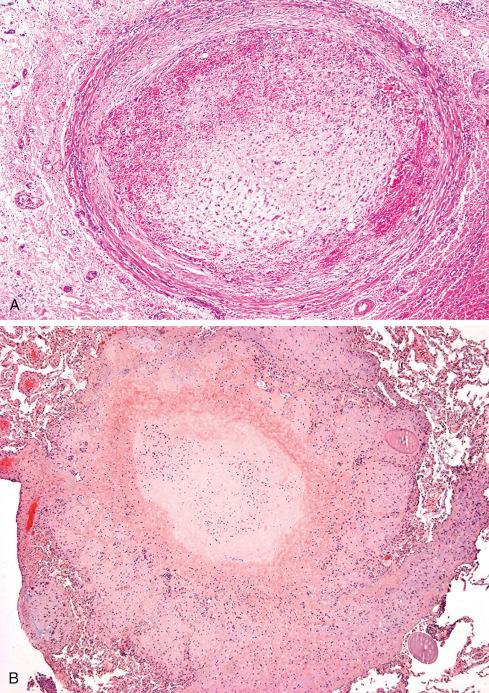
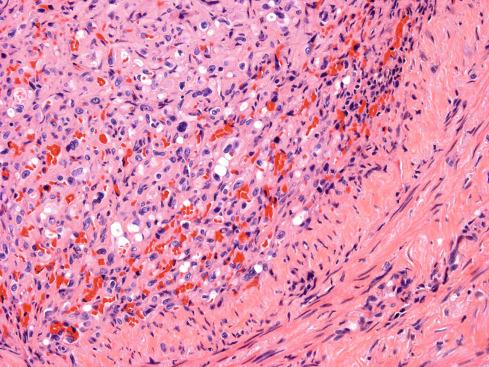
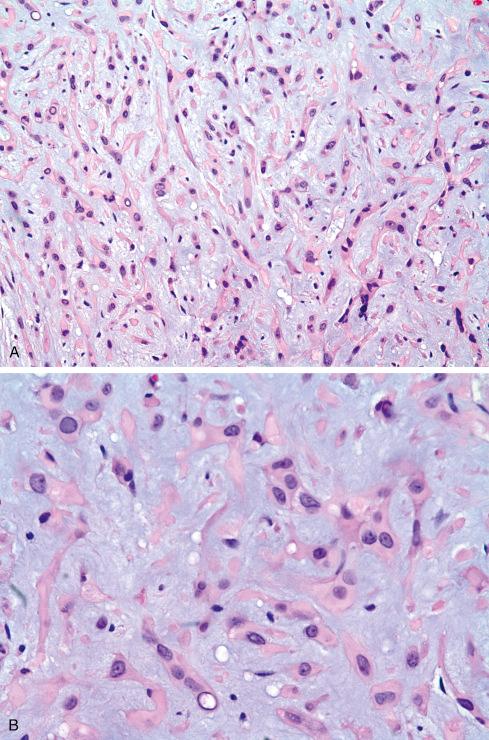
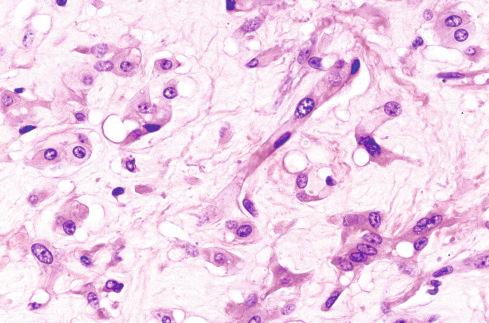
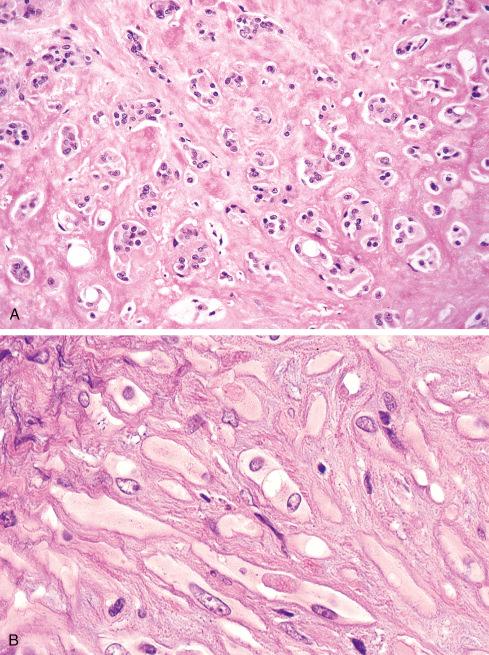
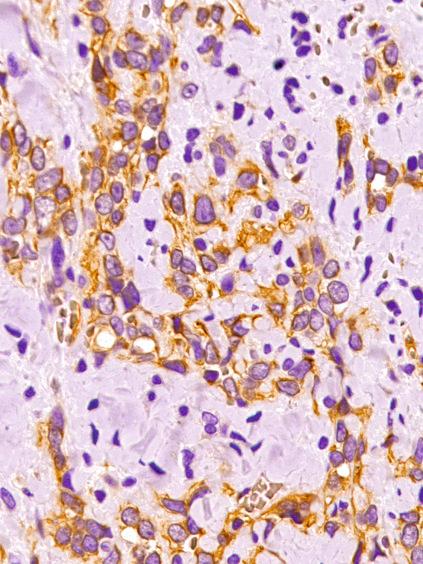
A small subset of epithelioid hemangioendotheliomas has significant atypia, mitotic activity, or both ( Figs. 21.9 and 21.10 ). Although some refer to such lesions as “malignant epithelioid hemangioendothelioma,” this designation is often confusing for clinicians, and we recommend instead the term high-grade epithelioid hemangioendothelioma . These tumors typically also fulfill the criteria of high-risk lesions, as later described. Although risk stratification is seemingly redundant for high-grade epithelioid hemangioendotheliomas, the value of the proposal lies in prognosticating for the remainder.
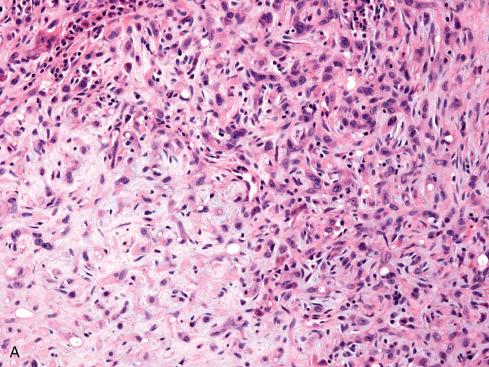
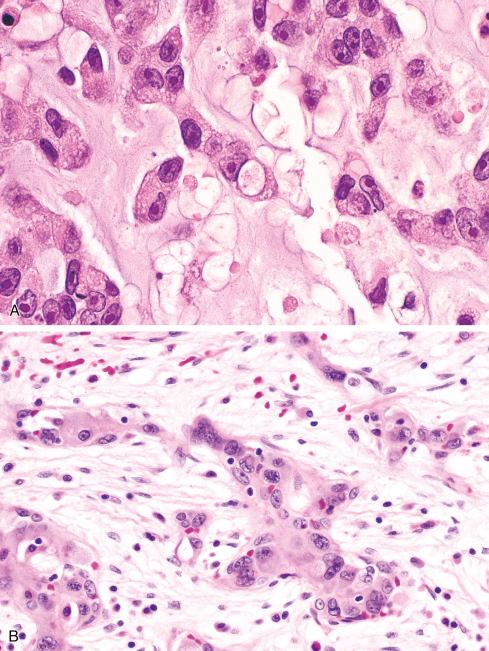
In 2013, Antonescu et al. described 10 cases of a proposed unusual morphologic variant of epithelioid hemangioendothelioma, defined at the molecular level by fusions involving the YAP1 gene on chromosome 11 and TFE3 on chromosome X. These tumors affect young adults (mean age: 30 years), involve both sexes, and develop in somatic soft tissue (6 cases), lung (3 cases), and bone (1 case). The morphologic features of these lesions, however, differ in some respects from those of a conventional epithelioid hemangioendothelioma. Most importantly, they contain well-formed, multicellular vascular channels, as opposed to the single-cell, cordlike channels of epithelioid hemangioendothelioma ( Fig. 21.11 ). The epithelioid endothelial cells, which have abundant eosinophilic cytoplasm with occasional intracytoplasmic vacuoles, may be widely spaced or back to back in a partially myxoid stroma ( Figs. 21.12 and 21.13 ). These tumors generally lack a myxochondroid matrix and evoke a more striking inflammatory response, including eosinophils, than classic epithelioid hemangioendothelioma. Thus the tumor has some of the features of an epithelioid hemangioma.

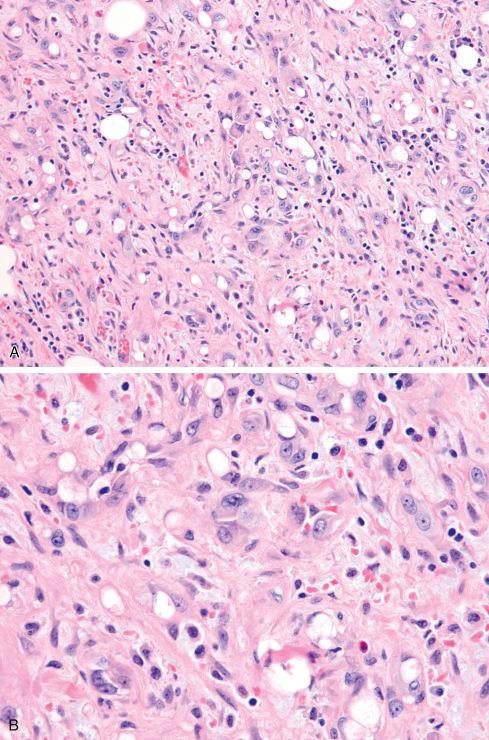
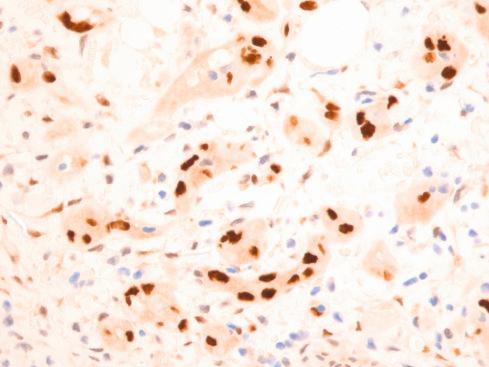
Although these unusual cases have been described as representing epithelioid hemangioendotheliomas carrying YAP1-TFE3 rather than WWTR1-CAMTA1 fusions, their clinical and morphologic features suggest that they might better be considered a distinct entity.
Follow-up in 6 patients showed 5 to have metastatic disease to lymph nodes, soft tissue, liver, and bone. Only one patient was noted to have died of disease, however, following a protracted (17-year) clinical course. A small number of similar cases have been subsequently described by others as well.
The differential diagnosis of epithelioid hemangioendothelioma includes metastatic carcinoma (or melanoma) and various sarcomas, which can assume an epithelioid appearance. In general, carcinomas and melanomas metastatic to soft tissue display much more nuclear atypia and mitotic activity than epithelioid hemangioendothelioma and are rarely angiocentric. Epithelioid angiosarcomas are composed of solid sheets of highly atypical, mitotically active, epithelioid endothelial cells. Necrosis is common, and vascular differentiation is expressed primarily by the formation of irregular sinusoidal vascular channels. Epithelioid angiosarcomas lack WWTR1-CAMTA1 fusion and CAMTA1 immunoexpression, unlike high-grade epithelioid hemangioendotheliomas.
Epithelioid sarcoma is perhaps the closest mimic of this tumor. Composed of nodules of rounded eosinophilic cells that surround cores of necrotic debris and collagen, epithelioid sarcoma develops primarily as a distal extremity lesion in young individuals. The polygonal cells usually blend and merge with the collagen in a close interplay between cell and stroma. In ambiguous cases, immunohistochemistry (IHC) may provide the most reliable clues for differentiation. With appropriate cocktails of monoclonal antibodies directed against a broad spectrum of keratins, immunostaining is positive in virtually all carcinomas and epithelioid sarcomas. About one-fourth of epithelioid hemangioendotheliomas express keratin, but usually the staining is less intense and focal compared to epithelioid sarcoma. The cells of epithelioid hemangioendothelioma express CD31 (see Fig. 21.8 ), FLI1, and ERG, markers that are generally absent in epithelioid sarcoma and most carcinomas, in our experience. It should be noted, however, that some studies have shown significant percentages of epithelioid sarcomas to FLI1 and/or ERG positive, likely reflecting antibody choice and IHC methods. CD34 expression may be seen in both epithelioid hemangioendothelioma and epithelioid sarcoma, a potential pitfall. Loss of expression of SMARCB1 (INI1), seen in more than 90% of epithelioid sarcomas, is not a feature of epithelioid hemangioendothelioma.
Epithelioid hemangiomas should also be rigorously distinguished from epithelioid hemangioendotheliomas. Epithelioid hemangiomas are vasoformative tumors, consisting of a vaguely lobular proliferation of large, eosinophilic endothelial cells lining capillary-sized vessels. Epithelioid hemangiomas may be quite cellular and solid, but lack the distinctive myxochondroid matrix that at some level defines epithelioid hemangioendothelioma, and often contain large numbers of eosinophils, a potential clue. Intracytoplasmic vacuoles may be seen in epithelioid hemangiomas as well as epithelioid hemangioendotheliomas.
Epithelioid sarcoma-like (pseudomyogenic) hemangioendotheliomas lack the distinctive myxochondroid matrix of epithelioid hemangioendothelioma and consist of distinctly eosinophilic, epithelioid to somewhat myoid-appearing cells, lacking intracytoplasmic lumens. IHC for FOSB (positive in epithelioid sarcoma-like hemangioendothelioma) and CAMTA1 (positive in epithelioid hemangioendothelioma) are useful in this differential diagnosis.
Become a Clinical Tree membership for Full access and enjoy Unlimited articles
If you are a member. Log in here